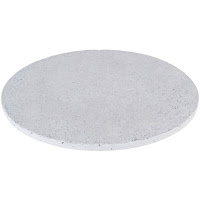On Monday, October 30 2017, i was incharge in semester one class B, the material today is Method Of Cooking, Method of cooking is divided into two, there are Dry Heat Method and Moist Heat Method. Today the class is opened by chef Dyno.
After
all methods are explained, chef dyno divided into 6 groups, each group has a
task to explain some menus that use all cooking methods.
https://madesw25.blogspot.co.id/2017/08/method-of-cooking.html
After all activities is done, we are do General Cleaning.
General Cleaning of Kitchen
A kitchen is a place or part on the house
where cooking and preparing foods are being done. Kitchen can be a
multifunctional room in a house because it can also be used as dining,
dishwashing, laundry and food storage room. A typical kitchen in the house is
equipped with a sink, cold running water, refrigerator, kitchen cabinets,
microwave oven and other electric operated machines. Kitchen must always be
clean and free from any germs to prevent contamination to kitchen utensils and
foods. However, cleaning kitchen can be a very difficult task to do. Here are
some tips that may help you to clean your kitchen.
Cleaning the stove and other electric
appliances:
Stove is the most used equipment in the
kitchen because it is used for cooking foods and usually excess food and sauces
are the main dirt which can be found in the top of the gas and electric stove.
You can use a soft sponge, warm water and soap in cleaning the electric and gas
stove. You must keep your burners clean to maintain sanitation of your kitchen.
After cleaning the top of the stove, you must also clean the surface of the
entire stove. You can use again soft sponge and a detergent in cleaning the
stove. If the control knobs are removal you can wash them using warm water in
the sink. Do not use soap and other detergent with strong abrasives for it may
was away the markings of your stove knobs. You can also use this method in
cleaning other electric operated machines in your kitchen such as rice cooker,
microwave oven and refrigerator.
Organizing your kitchen stuffs and remove
unnecessary stuffs:
Cleaning kitchen can be easy if you know to
organize your stuffs. A Typical has kitchen cabinets which are used for
storage. Having general clean up in your kitchen you might find unnecessary
supplies like empty bottles, biodegradable materials and other disposable
materials inside your kitchen cabinets. You must put away all the things that
you do not need. After putting away all the things that you do not need you
must now start organizing all your kitchen stuffs. Have a special drawer where
you can put all the utensils and other materials. By doing this you can easily
find all the materials that you need. Do not put toxic materials inside your
kitchen. Always remember to empty kitchen sink and wash all the dishes before
you leave the house or go to sleep.
To finish cleaning in kitchen you must also
sweep your kitchen’s floor:
You can use a broom, dustpan and a mop to
intensively remove all the food stains present in the floor. You can also use
detergent to sanitize the floor. Once you have finished cleaning all the parts
of your kitchen you must put all your kitchen supplies back in their places.
To maintain the cleanliness of your kitchen
you must do general cleaning in the kitchen once in a week. Maintaining the
sanitation and order of your kitchen can keep your family away from any
diseases because all the foods prepared in your kitchen are not contaminated
with any bacteria and germs. Food safety follows when your kitchen utensils and
other equipment in your kitchen are free from contamination.














































